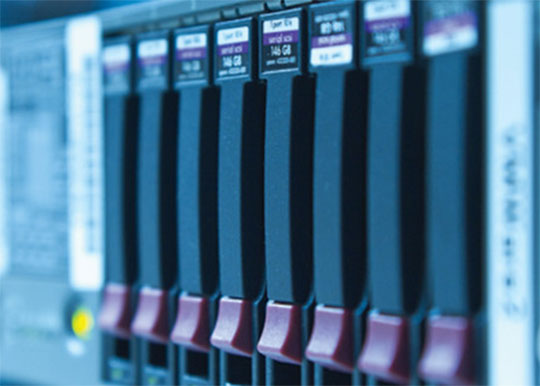
Storage 101 – What Is RAID Technology?
October 22, 2015
Last week, G-Technology gave a presentation to Dodge College students about storage, and back up strategies when it comes to your work. If you missed out on it, don’t fret! Here is a basic run-down of what they covered and things you need to know when it comes to saving your work, and how to keep it safe!
What is RAID?
RAID itself is an acronym from Redundant Array of Independent Discs. RAID technology involves putting multiple hard drives together for performance, protection, or both. For creative professionals, such as filmmaking, sound design, and pretty much every Dodge College student, RAID is used to actually handle the projects you are working on in a fast, efficient manner. However, RAID is not a backup for your work. If something destroys your RAID device, your date is gone.
Backup Strategies
In order to ensure proper backup to all your hard work, the 3-2-1 Rule is recommended. That is, keep 3 copies of your data (on separate devices, of course) in 2 physical locations, and only work from 1 copy. While it may seem like a lot, it’s a sound solution for the unforeseen disaster that may happen. Be safe, and don’t lose your hard work!
Solutions
Of course, there are many options to choose from when it comes to storage, and the best one for you really depends on your needs.
Hot-swapping is the ability to replace hard drives while an array is still running. In the event of a drive failure, this allows you to replace the failed drive so the RAID controller can start rebuilding the protection.
Enterprise-class hard drives also offer a number of advantages, such as being designed for multi-drive environments, and being having been rated for 24/7 use.
RAID Formats
Of course, there are different types of RAID formats as well, each suited for different needs.
RAID 0, also known as striping, is designed for increased performance and capacity relative to a single drive. When something is written into the array, the controller separates the files into small pieces, called stripes, and distributes them between all the drives in the array. A common use for this format would be video editing.
RAID 1, also known as mirroring, divides the data amongst multiple drives, instead of just putting them on a single place, for redundancy. A common use for this format would be photo and audio archives.
RAID 10, also known as the combo, it stripes together two mirrored sets. It’s basically like combining RAID 0 and RAID 1 together. A common use for this format would be video editing.
RAID 5 is an alternative to RAID 10. To understand it better, it’s like RAID 0, with insurance against a single drive failure. A common use for this format would be video editing and large photo and audio archives.
At the end of the day, it’s up to you to decide what will work best for your work flow. But, it helps to know the different types of storage you can use to help protect your projects.
For those of you who attended the presentation, they forgot to choose a winner for the hard drive! So, Stephanie Rice of G-Technology has opened the contest up here. Just sent her an email at stephanie@g-technology.com to confirm you attended the seminar (they have the sign in sheet, folks!) and out of those emails, she will randomly select a winner of a new G-DRIVE ev RaW 1TB!

